 The tragic recent history of Cambodia that many people are unaware of still has a big impact on modern Cambodians
The tragic recent history of Cambodia that many people are unaware of still has a big impact on modern Cambodians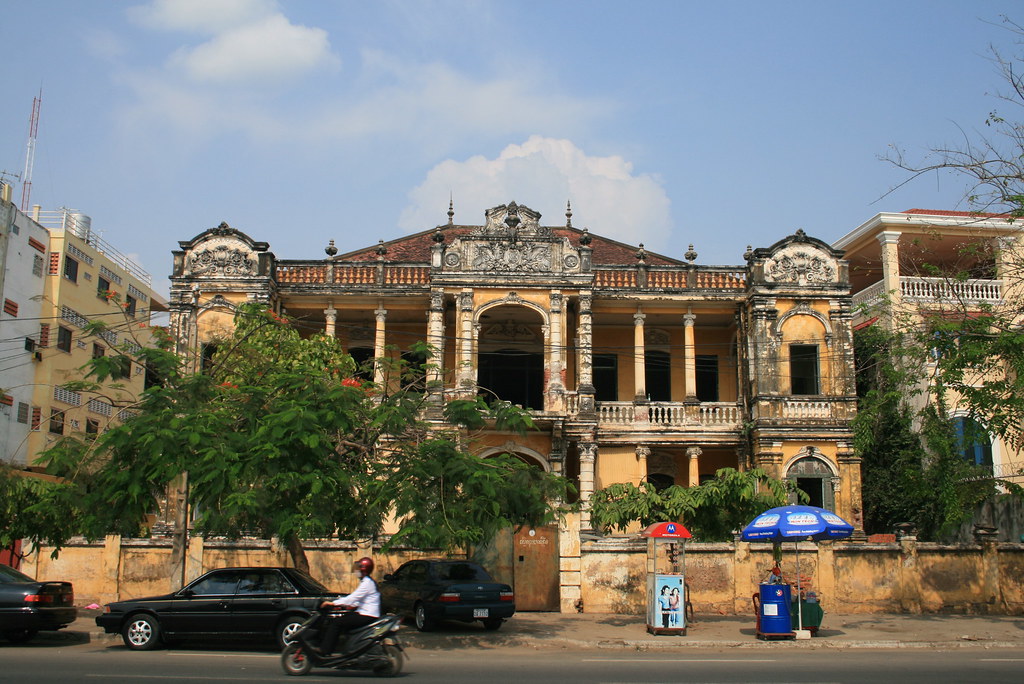 Phnom Penh
Phnom Penh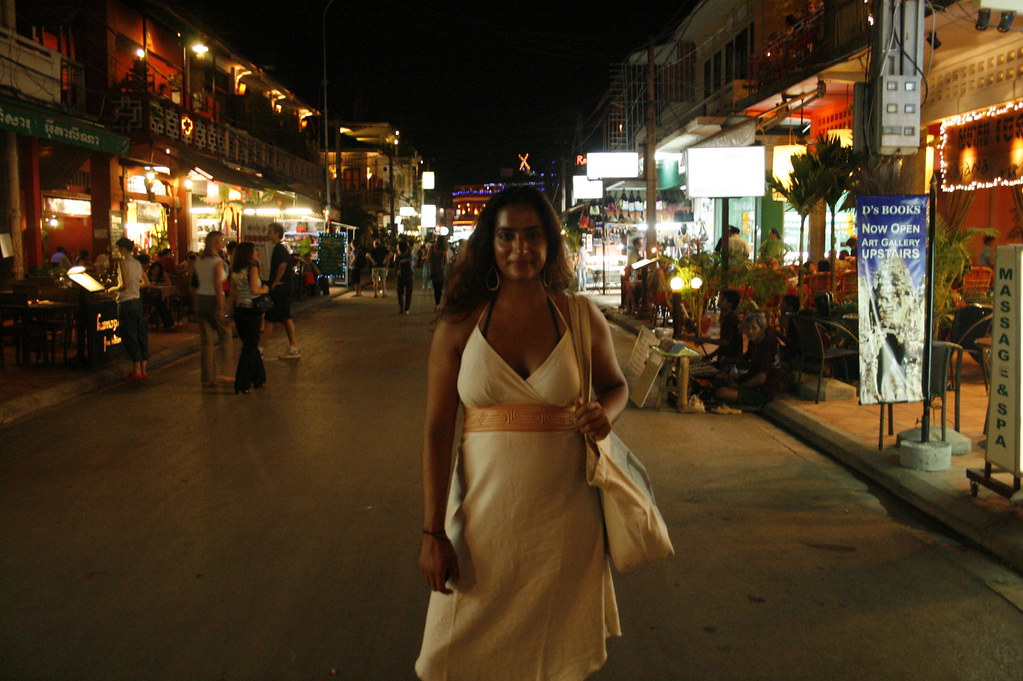 Bar street in Siem Reip
Bar street in Siem Reip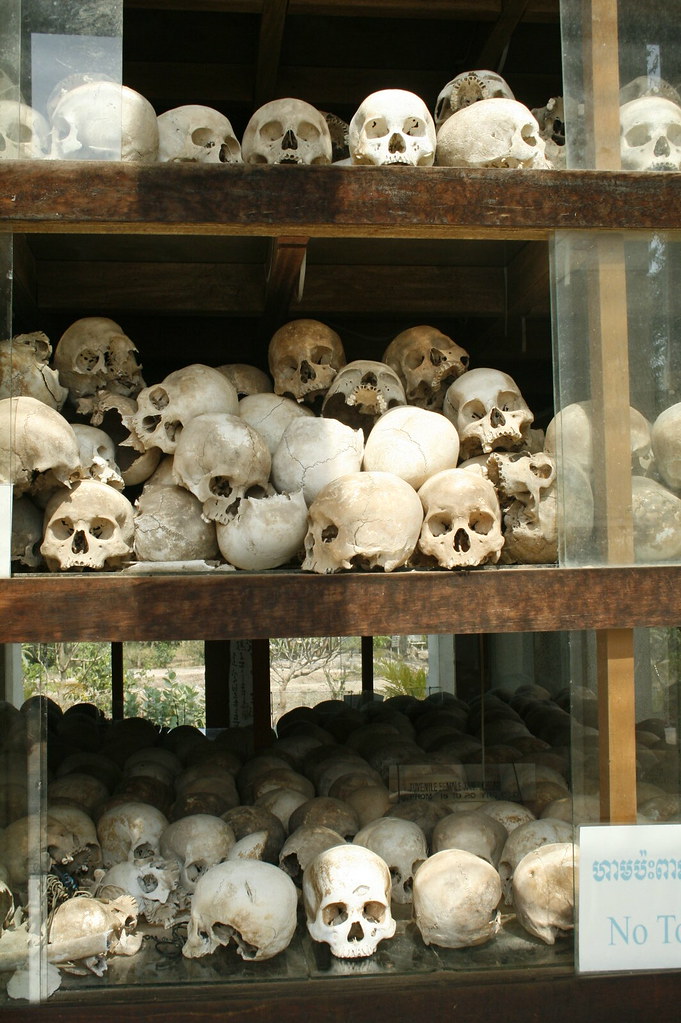 The site of the killing fields
The site of the killing fields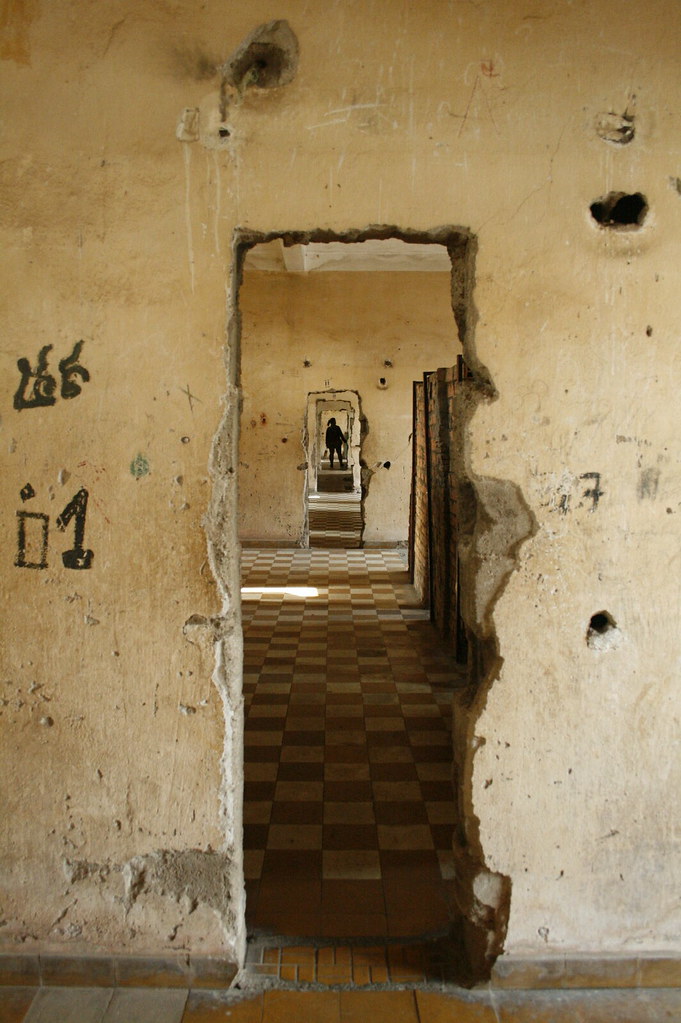 Holding cells at S21 Museum
Holding cells at S21 Museum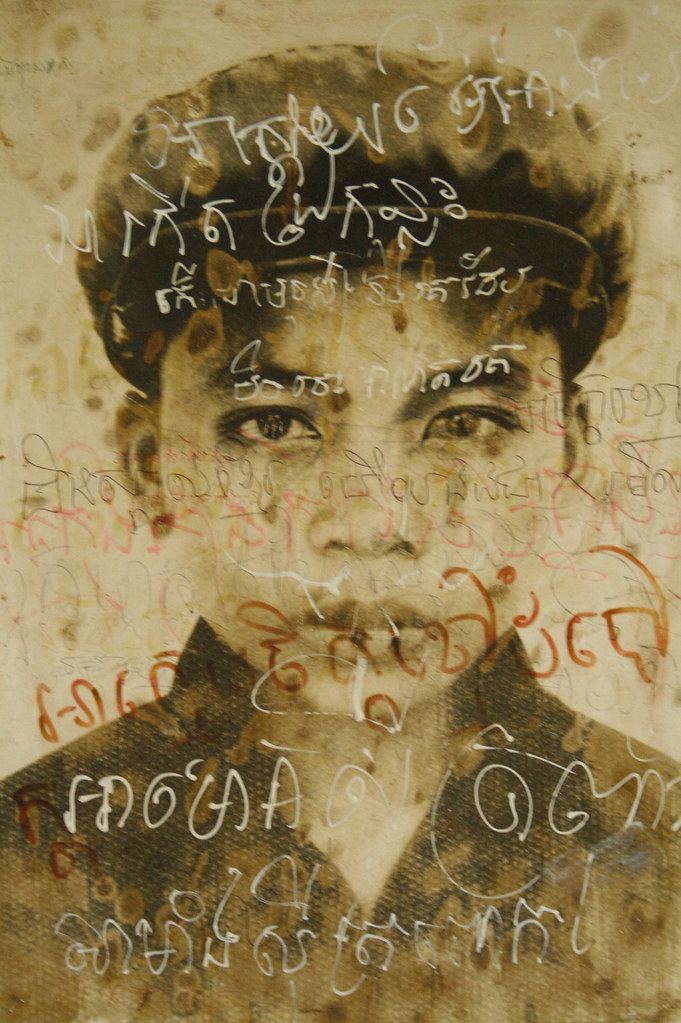 s21 museum, many people had to become soldiers or help Khmer Regime in fear of being killed
s21 museum, many people had to become soldiers or help Khmer Regime in fear of being killed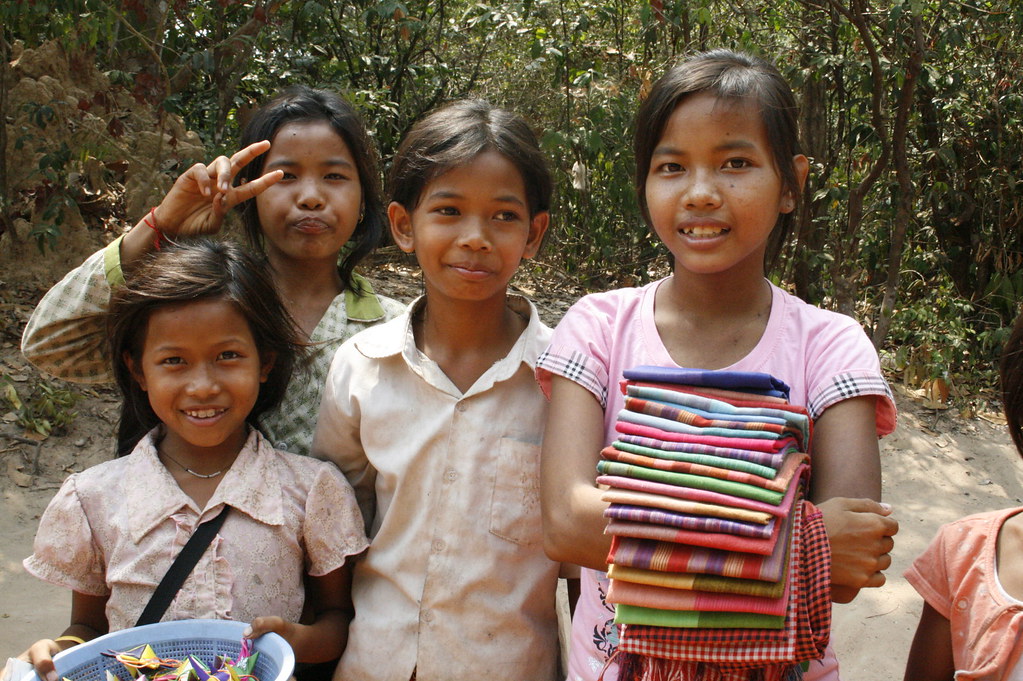 These kids get by and help thier families by selling scarves and trinkets
These kids get by and help thier families by selling scarves and trinkets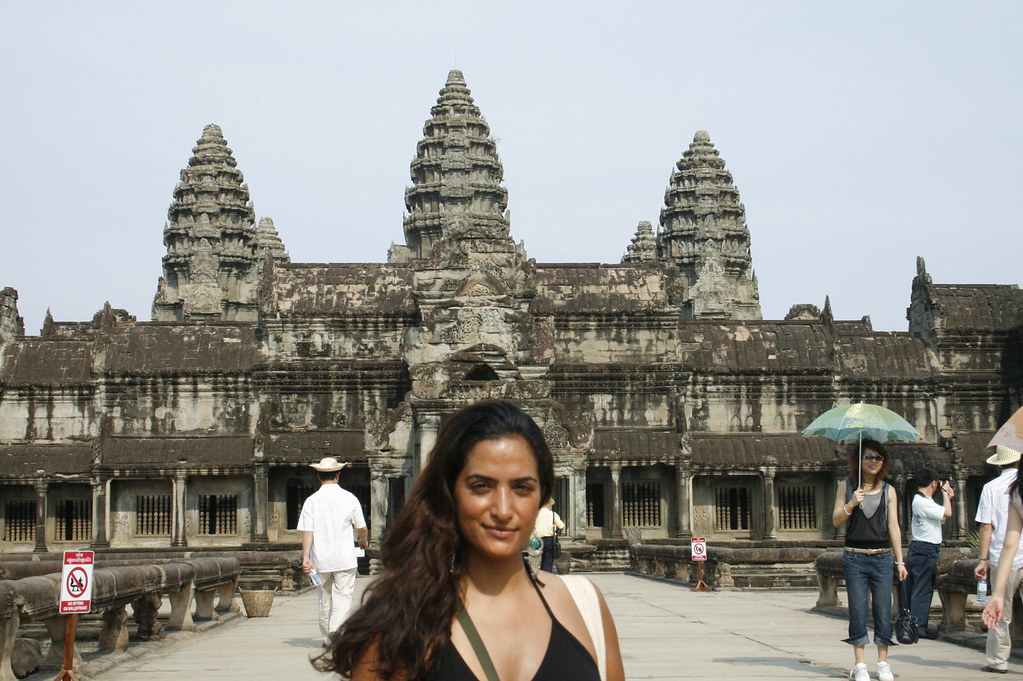 Infront of Angkor Watt
Infront of Angkor Watt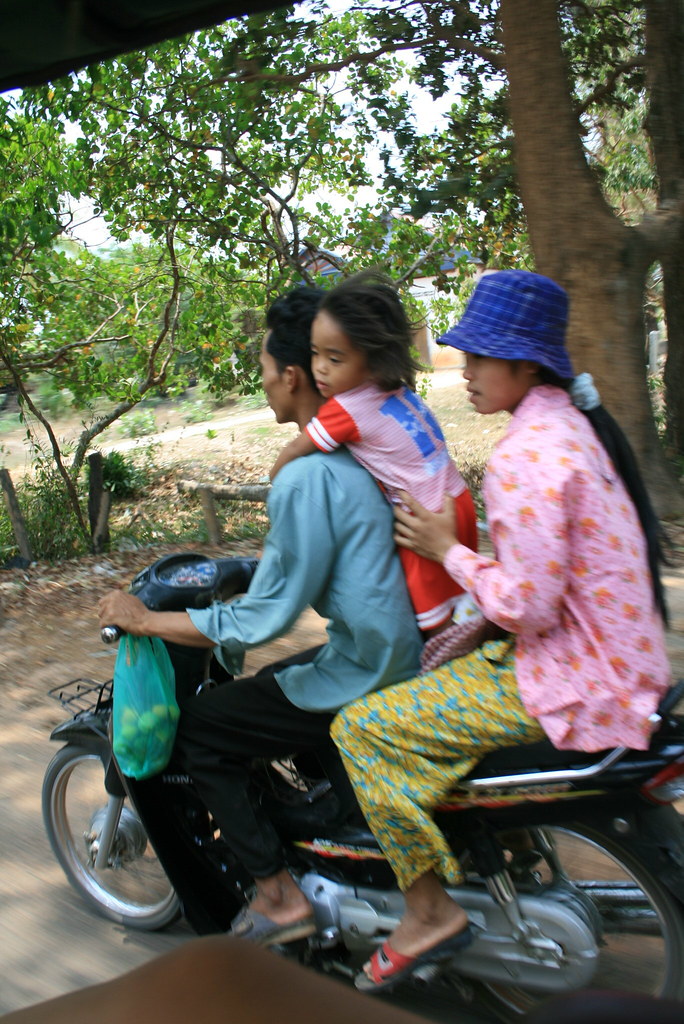 The main form of transformation
The main form of transformation
One of many temples of Angkor have these remarkable trees that grow directly ontop of them
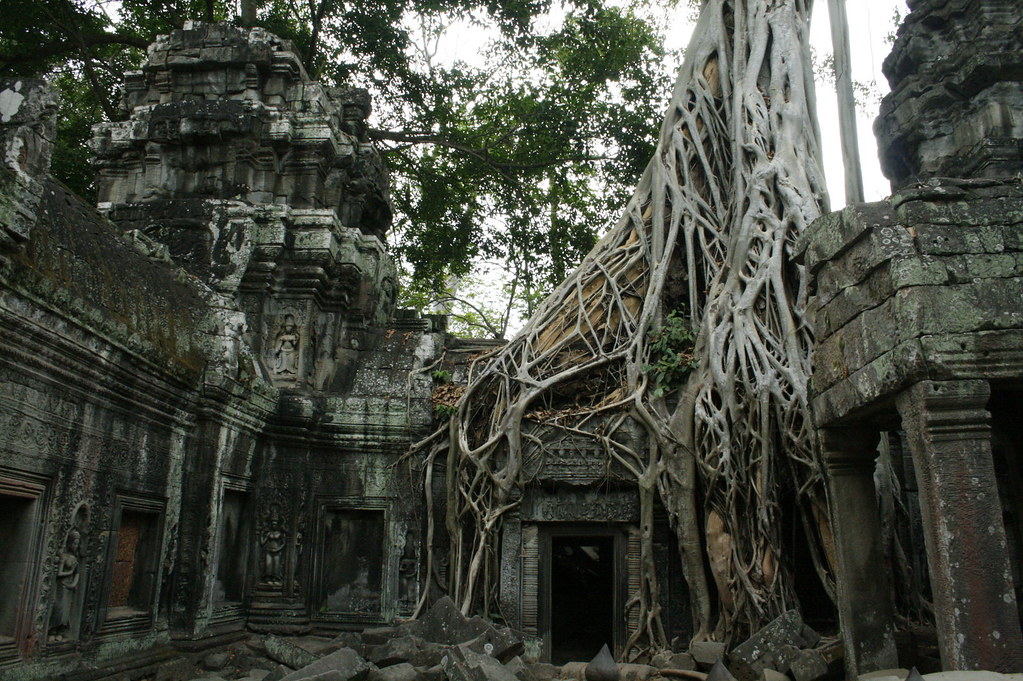 Angkor Temple
Angkor Temple Buddhism and Hinduism have spread from India and have a big influence on Khmer Culture
Buddhism and Hinduism have spread from India and have a big influence on Khmer Culture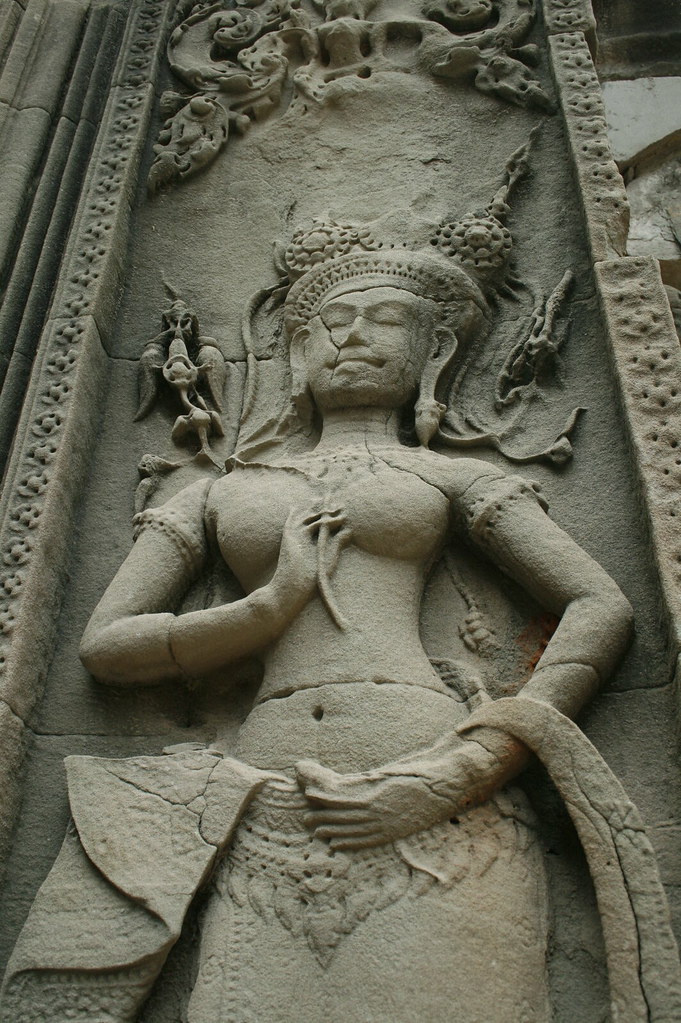 Angkor Temple Carving
Angkor Temple Carving spiders snack for sale at a bus stop on the way to Phnom Penh
spiders snack for sale at a bus stop on the way to Phnom Penh Khmer Dancers in Seim Reip
Khmer Dancers in Seim ReipBefore arriving to Cambodia I had heard so many mixed reviews about people traveling along the Vietnam/ Cambodia/ Thailand/Laos route. Many said that were disturbed and annoyed by the children and people that sell goods to tourists. They said it was a difficult place to be for a number of reasons. I knew that the difference between Thailand and Cambodia would be able to seen immediately on a developmental scale, but I had no idea what exactly to expect. I had known of the past history of Khmer Rouge and US involvement in the matter. I knew that the history of genocide and evidence of it's impact could still be seen. I never realized exactly to what degree. I loved Cambodia. Yes it was more difficult, and yes as a foreigner you do experience many uncomfortable scenarios but on the same note there is so many small miracles and sooo much strength seen by the people of Cambodia. I knew little about Khmer people or their culture. The Angkorian kingdom leaves centuries old rich history which Cambodians are very proud of.
Driving into Cambodia I was warned I might have a problem at the border. Sometimes people are charged extra entry fees by border police. The bus I took from Bangkok to Siem Riep was about 12 hours, one hell of a journey but quite an experience. At the border you have to change buses. You go from an air conditioned , padded seats tourist bus to something that looks like a school bus with no ac and a hell of allot of dust. When you get the border you have to carry all of your belongings from border to the other checkpoint. The road to Siem Riep from the border is not paved and extremmmmely bumpy. You have to bring toilet paper with you to use at the one bathroom stop your given. On the bus there were a number of Cambodians going from a small town to Siem Riep. My seat neighbor offerred me some peculiar sausage wrapped in plastic. She was very intent on me trying the sausage and I dare not decline. She didn't speak any English but she was really lovely. She offered me water and for awhile she passed out on my shoulder which I ofcourse didn't mind.
Arriving in Siem Riep I was transferred to a tuk tuk (mini motorcycle taxi) to take me to my hostel which was really lovely. The "Siem Riep" hostel which I booked for 10$ a night was reallly lovely. There was internet, wifi, restaurant/bar, pool, pool table , dvd area, as well as a yoga room and chill out room. My female 6 bed dorm was full with 5 other girls all traveling alone, all from different countries. It was really inspiring and motivational talking to all of them and what they were doing all by themselves. I felt really comfortable and empowered knowing that I could find brave women from around the world taking the initiative to travel alone.
At the hostel I met Rachel , Rachel was English and 35 years old recently divorced. Rachel sold her house and was traveling around the world for more than a year. We shared a tuk tuk around the Angkor temples the first day. Awwing at all the amazing architecture and cultural heritage it was no wonder why Cambodia's tourism was booming. The world heritage site of Angkorian temples are simply magnificent wonders. I learned that many of the temples were being restored because of damage received by the Khmer Rouge regime that ordered the distruction of the temples as well as the chopping off of many heads of the Buddha statues.
When you visit the temples you are bombarded by many children trying to sell you things. They are beautiful and they appeal to your heart by asking you to buy whatever they are selling so they can make money to go to school. Their parents are usually close by directing them on who to target and then taking the money from them. This is the other side of the sad dynamic on dependent informal sector economies that rely on tourism. I was not annoyed by it at all. The sadder thing that I learned is that all the money that is made by tourism for the sites since you have to buy a pass to see the temples is not put back into the economy. The money goes to the different nation-states and firms that have sponsored the restoration of many of the temples. Of them include China, India, Vietnam, The US among other countries. This is heart breaking to know that one of the biggest economies is privatized. Trying to recover from a tragic history of genocide in which 1/5 of the countries population was killed less than a few decades ago, you can correlate the impact this has on people.
Siem Riep was easy. Equipped with a bar street near by popular guest houses and hotels fill with trendy cafes and restaurants serving everything from Mexican to pizza to Khmer food. Here you can mingle with all the backpackers and travelers. Actually i was shocked at the amount of luxury hostels catering to luxury travelers. Huge 5 star hostels going for 1000$ a night seemed so ridiculous.
Another thing which i noticed is that Cambodia is addressing the punishment for supporting the child sex industry. Another one of the sad realities is that many children are sold by their parents into the sex trade. A Australian man that was staying in my guest house stated that despite the efforts to crack down, he was offered a small girl for $ on the street. I was absolutely mortified.
Among the various issues that plague Cambodia and Cambodian people I found Cambodians to be very friendly and hopeful. Many of them speak English which is contrasted to Thailand where much fewer speak English , even in the Cities. They have to know English because the dependency on tourism is part of many of their livelihoods.
After going to a landmine museum which was created as an NGO hoping to rid Cambodia of it's excess of mines which have killed many innocent civilians after the civil war. After visiting the killing fields and going to the s21 museum which was a highschool converted into holding prison where many where killed . I was absolutely astonished by how recent and to what extent this history had been a reality to soo many Cambodians. My tour guide of the s21 museum had lost her whole family during the war and yet everyday she talks about he horrors done by the government and men that carried out the torture and executions. It was important for me to understand how this history effects a collective consciousness. Cambodians remember, but they persevere and on many of them you can see the light in their eyes, pushing them through.
I was really touched by the all the strength I saw in Cambodia, it was a very difficult place to be, but exactly why I am glad I went and glad to understand a very complex and beautiful place.
Akoon
2 comments:
Dear Citizen of the Earth
By opening the closed books as what had happened in Combodia you are doing a favor to humanity
Take care
Best wishes
I loved Cambodia too, despite finding it difficult to travel all alone! That road from bkk - to siem reip was definately an ordeal.
It is true, the beauty of the people is profound, despite the feel of a very recent tragedy in the atmosphere. I don't know if it was just me, but I felt the pain brought from the genocide was still alive...
I love your pic of p.p, the city is dusty and dirty but has an amazing charm. What I found disturbing were the children, you have said here that many of their parents coaxed them into begging - which is true - but the complexity of it is even harsher.
I came across a community arts centre in pp and got chatting to some local artists - who could speak broken english. A friend of theres arrived - who was a teacher (trying to get an ngo job) who had excellent english and we got chatting.
he said that many of these 'street kids' had been abandoned/orphaned/sold and were given drugs/alcohol from a very early age (i.e 5 years old) so to be ever dependent on the gangs who lured them in. thus the money they earned begging was given back to gangs.
You could see it, glazed eyes of small children 11 at night.
He also told me they were groomed - taught to speak english and be cute so they could generate more money...
in siem and pp i spoke to these street kids - who yes had amazing english..i would ask them why they werent in school, who they lived with, what they wanted to do with their lives. some said they had families, some just laughed and sang songs to try and amuse me instead.
It really was heartbreaking. Heartbreaking to see how they were treated, heartbreaking to see that this was all an effect of war and genocide in which the west played a large part (oh and how they continued to support the khmer rouge even after their fall) a very interesting documentary (well 2) by john pilger
year 0
and the betrayal
puts what we saw into prespective.
Post a Comment